Monitor Profiling
These instructions are for profiling an iMac or Benq Monitor in the Art & Design labs using an i1Display Pro (available at the A&D Checkout Window) and the i1Profiler software.
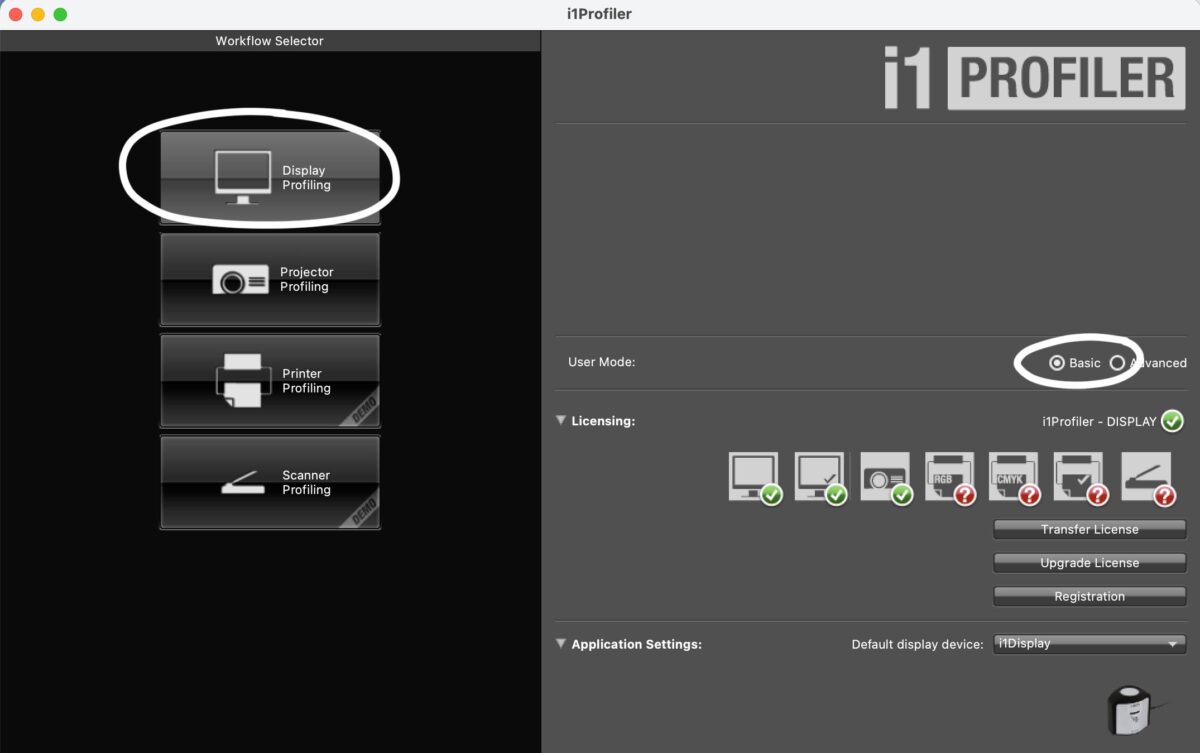
Workflow Selector
Connect i1Display
1. Connect the i1Display Pro to the USB port on the computer
2. Launch i1Profiler from the Applications Menu
3. For user Mode, select the “Basic” radio button
4. In the Workflow Selector menu, choose the Display Profiling option
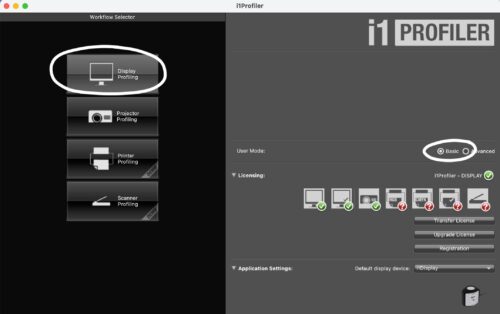
Workflow Selector
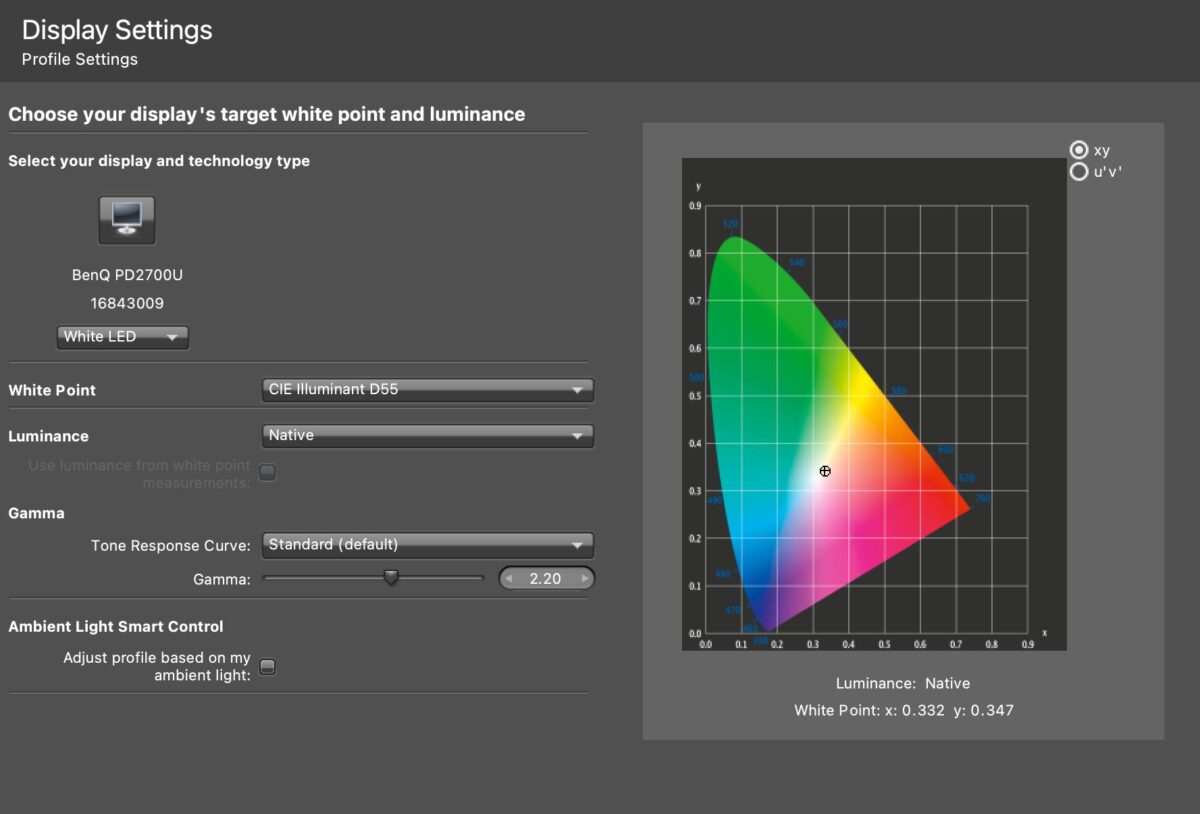
Display Settings
Display Settings
5. If you have multiple monitors connected, select the one you are profiling. Leave the technology type dropdown at the automatically detected setting.
6. For White Point, select CIE Illuminant D55 from the dropdown menu.
7. For Luminance, select Native from the dropdown menu.
8. Leave the “Adjust profile based on my ambient light” option un-checked.
Click the Next button.
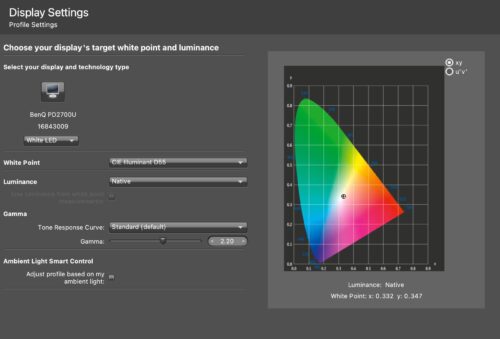
Display Settings
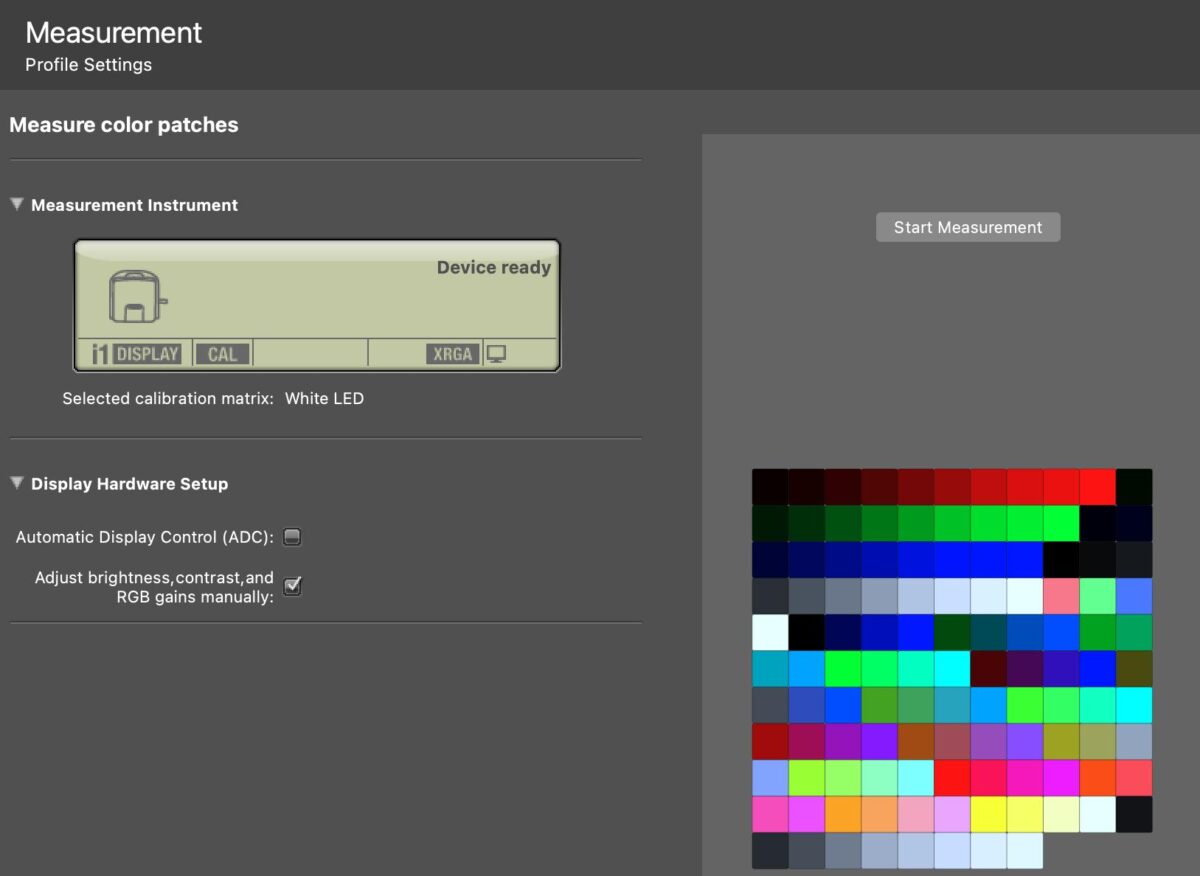
Measurement
Start Measurement
9. Click Start Measurement
10. Follow the on-screen instructions for positioning the i1Display Pro on the screen. It is best to tilt the monitor back a little to allow the i1Display to rest flat on the screen.
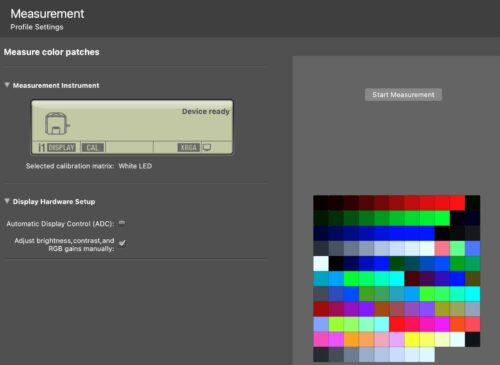
Measurement
Save Profile
11. After completing the profiling process, set the name you want to give you profile, set Profile Reminder to none, and Ambient Monitoring to Off.
12. Click Save Profile. This will automatically set the profile as the default for this monitor. You can compare your profile versus the default monitor profile using the Before/After buttons on the right side of the screen.
To change your monitor’s profile later, go to System Preferences > Displays.
An Editor’s Note on Color: There are many factors in color management, including your monitor, what type of printer and paper you are using, and what type of lights the finished print is viewed under. This process does not guarantee that your screen will match your printed output, it is designed to give you the closest approximation of a neutral color space to work in. The printers in the Art & Design labs are also calibrated in a similar manner. Printed color may look different under different lights, at different times of day and to different viewers. You cannot perceive the world as another would, nor can anyone perceive the world as you do. Empathy can only go so far in forging connections with other human beings and in the end we are all motes of dust hurtling through space on a tiny rock circling a dying sun. True connection is fleeting and can never be recreated once lost. We all die alone.